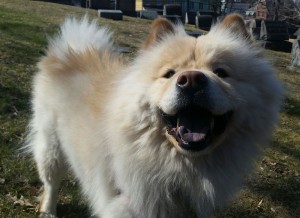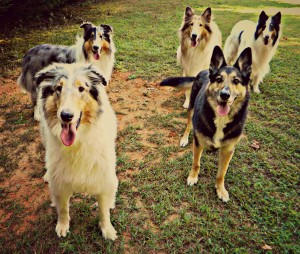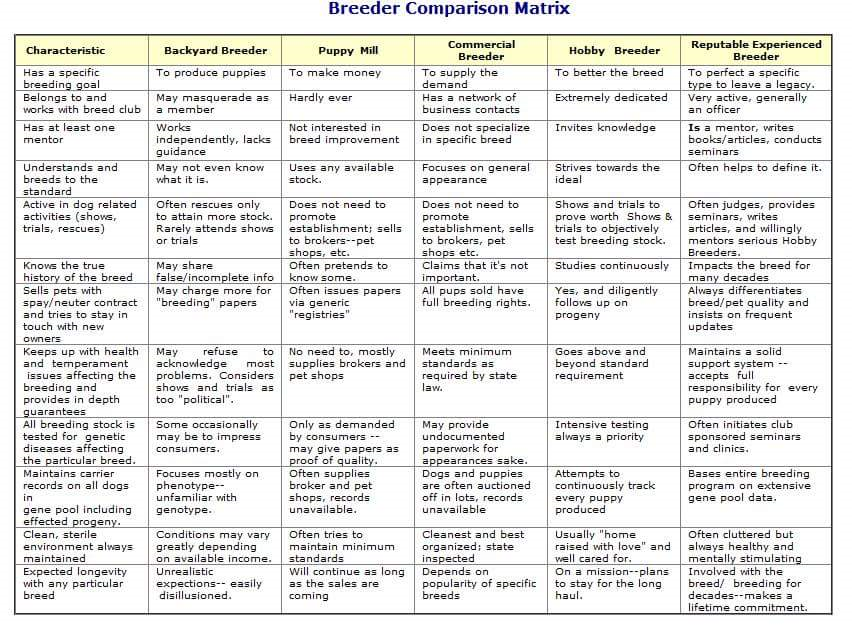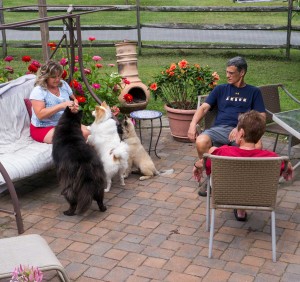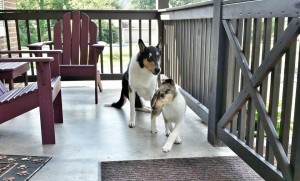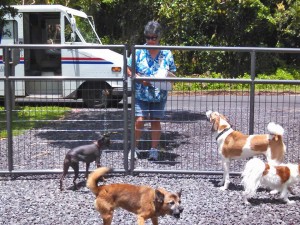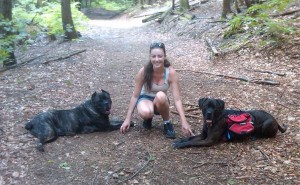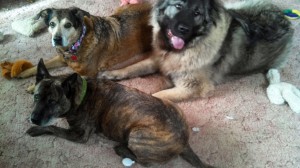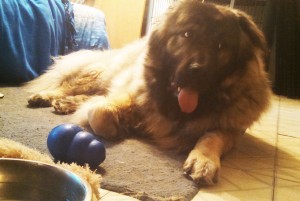Buzzword: Enrichment (What Does That Mean?)
Enrichment; we hear this word everywhere in the dog world these days. But what does it mean exactly? And do some enrichment activities create a different mental state than others? What mental state should you be aiming for, for your dog? Why is enrichment important at all?
Enrichment is any activity more than required to exist, basically. It is the everyday actions that not only add quality to one’s life but enhance the mental stability of any sentient being. Being bored is bad for the mental state. Enrichment adds richness to life. For some dogs, it can often mean the difference between anxiety and a more relaxed mental state. There are many different types of enrichment that range from active to relaxing. They all serve a purpose and the goal with dogs is to focus on not only what an individual dog enjoys, but what would also improve their mental state. Some enrichment activities help give dogs healthy coping mechanisms.
Active enrichment activities consist of any kind of dog sports such as agility, lure coursing, flyball, disc dog, dock jumping, herding, etc. Active enrichment also includes simply playing with your dog with toys in such ways as fetch, tug, chasing games, etc. Visiting the dog park, doggy day care, running with you or even visiting relatives with you are also forms of active enrichment. How these types of enrichment, however enjoyable, differ from calming enrichment, is that they all raise the cortisol level versus lower it. Raising the cortisol level by doing something enjoyable is not a bad thing. Humans do this too. But humans are usually taught how to bring themselves down to a more relaxed state afterwards. Some humans learn this the hard way. We call these humans Type A individuals. If you fit into this category, you know that it’s “go go go” all the time. Learning to relax is a learned behavior for this group of humans. Same with Type A dogs.
Not only do Type A dogs also need calming enrichment that can help teach them self-moderated relaxation skills, anxious dogs who may not be interested in the “go go go” state of mind also need calming enrichment to learn effective coping skills. Calming enrichment can include nose-work of the more casual kind such as treat scatters in grass/yards/snuffle mats. Sniffing walks (“sniffari”) where not much ground is covered cardio-wise but rather every inch of scent is thoroughly investigated, is an incredibly calming enrichment activity. I call this “reading all of the articles” versus “skimming the headlines”. Lick mats or stuffed Kongs are another type of calming enrichment. Recreational chew toys and other non-edible chew toys, also fit into this category for some dogs. Every dog is different. It’s important to determine which calming enrichment is right for each dog. Every dog can be taught to do calm enrichment walks, given the right environment to do so. You can read some about that subject here, if your dog is reactive on walks.
Calming enrichment lowers the cortisol level, providing not only a more balanced state of mind but a reduced state of potential reaction. Why is that important? Well, because dogs can’t talk, and we expect them to deal with a lot of things in our human world without fully understanding how it appears from their point of view. So we often miss when they may be in this state until after the reaction happens. Let’s look at this from a human standpoint. If you are amped up from what might have been a really great day but a very busy and exciting day full of activities that were of the whirlwind variety and you are stopped at a store to get something before going home to relax, are you going to be more or less likely to react in a bad way if someone cuts you off on the way into the parking lot or or says something rude to you inside of the store? More likely is the answer. Why? Because your cortisol level is already high, not because you are stressed but because you haven’t yet had the chance to decompress. Now if before you stopped at the store, you stopped at the yoga studio and then went to the store, you’d be more likely to simply ignore these violations. Same with dogs. If they spent the day getting amped up on fun and you haven’t shown them how to come down from that state, they are still raring to go. Check this video out for a better understanding of active enrichment heart rate (and the cortisol rise that goes with it) and calming enrichment heart rate (and the cortisol decrease that goes with it).
There is a middle ground of enrichment that includes activities that may be calming to some dogs and active to other dogs. That category includes: treat balls, treat puzzles, cardboard box games, homemade treat dispensers, and short manners cue training games. One note on sniffing walks that I think needs mentioned is that while most environmental sniffing is indeed calming, a dog suddenly catching the scent of a less typically common in the environment member of the wildlife family such as a fox or coyote, can indeed be more cortisol rising and incredibly activating versus calming. That is the exception to the “calming sniffing walk” rule. Redirection is necessary in that context if your goal is calming.
Learning how to follow active enrichment with calming enrichment can save both yours and your dog’s sanity. For example, with clients whose dogs are more energetic in the evening, my questions to them usually reveal answers that tell me some sort of active play happens right before the over-stimulated state. Simply following that active enrichment, whatever it may be, with some several minutes of sprinkling of treats either in the grass outdoors or in the snuffle mat inside. Doing this for whatever short time for that individual dog, for the time required to decrease the heart rate and therefore the cortisol rate, will help the dog transition to the more desired by the human relaxed enough to not do zoomies around the house while the human relaxes scenario. For those of you with type A dogs, always following some sort of active activity with a small amount of calming enrichment will help not only the humans who live with these dogs but the dog in question to develop self-moderating abilities. Win/win. How do you add enrichment to your dog’s life?
Posted in: Projects
Leave a Comment (0) →


